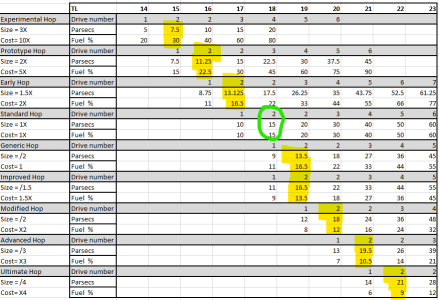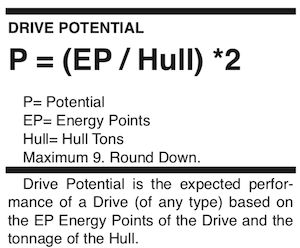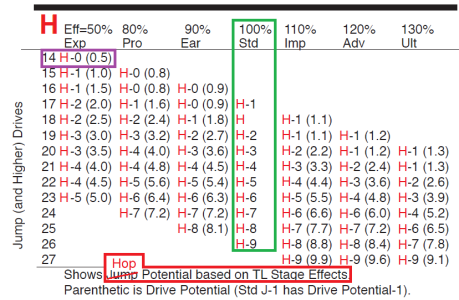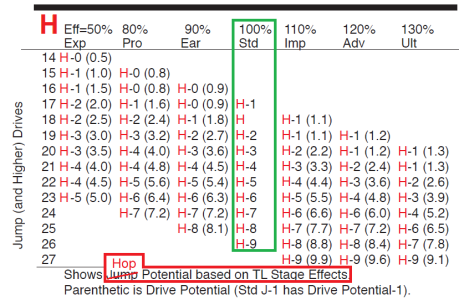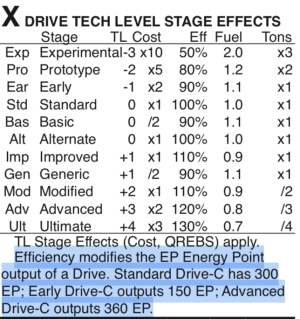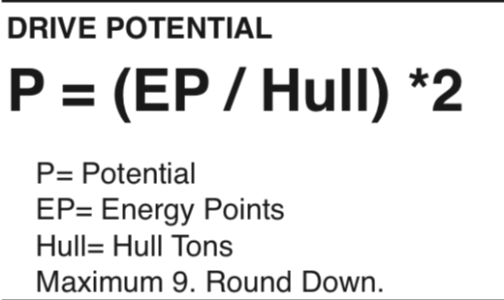I've been thinking about Hop Drive again lately, and tinkering with some ship designs. Basic Hop drive isn't that different than Jump, just faster. But the intermediate steps are interesting to me.
I've been pushing around some numbers for Hop Drive Tech Level, Size, Fuel consumption Etc. T5 is not the most straight forward sometimes. Hop drive is one of those cases.
Hop is a TL-17 technology, and Experimental versions should be in the works 3 TLs sooner. But the book says
"A society at TL 16 cannot produce standard Hop Drives. It can produce a Hop-A for installation in a Hull-B as an Experimental Hop-2 (at 50% efficiency, round down to Hop-1) with various tonnage (x3), cost (x10), and fuel (x2) handicaps, and it would require a Jump Field based on Jump Plates. Nevertheless, the result is an improvement over most other options"
I thinks there are a few things going on here. First they are trying to protect the setting, If you follow the experimental at -3 TL rule you'd get Experimental Hop at TL14, Prototype Hop at TL15 and Early Hop at TL16. Which would be somewhat disruptive to the Imperium. The other is that they seem to be saying you either go atleast Hop-1 or not at all. No TL14 experimental Hops of 5 parsecs. No TL15 Prototype Hops of 8 Parsecs and No TL16 Hops of 9 Parsecs. To be honest I find this boring, the game is set on a 1 parsec map, so I think it's perfectly fine to allow 5 parsecs at Hop-0.5. It's experimental like Cugnot's Steam Wagon from 1769, a sign of things to come, but not something that's going to be commercial available or viable.
With that in mind I worked up a chart for the various variants of Hop drive. I also made a few alterations, such as adding "Hop 1.5" at TL 18 and adjusting some of the modifiers so they make a better progression.
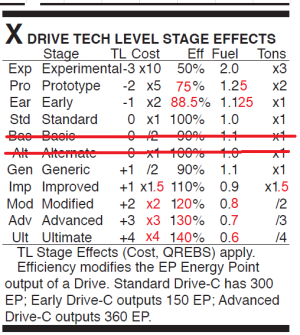
This is what it looks like when applied to the drives. You can select a standard sized drive from the drive performance table, modify the cost and size. Then get the performance in Parsec from and Fuel consumption from this table.
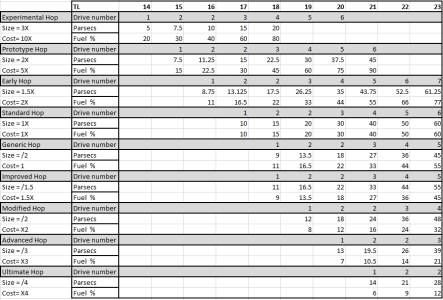
I've been pushing around some numbers for Hop Drive Tech Level, Size, Fuel consumption Etc. T5 is not the most straight forward sometimes. Hop drive is one of those cases.
Hop is a TL-17 technology, and Experimental versions should be in the works 3 TLs sooner. But the book says
"A society at TL 16 cannot produce standard Hop Drives. It can produce a Hop-A for installation in a Hull-B as an Experimental Hop-2 (at 50% efficiency, round down to Hop-1) with various tonnage (x3), cost (x10), and fuel (x2) handicaps, and it would require a Jump Field based on Jump Plates. Nevertheless, the result is an improvement over most other options"
I thinks there are a few things going on here. First they are trying to protect the setting, If you follow the experimental at -3 TL rule you'd get Experimental Hop at TL14, Prototype Hop at TL15 and Early Hop at TL16. Which would be somewhat disruptive to the Imperium. The other is that they seem to be saying you either go atleast Hop-1 or not at all. No TL14 experimental Hops of 5 parsecs. No TL15 Prototype Hops of 8 Parsecs and No TL16 Hops of 9 Parsecs. To be honest I find this boring, the game is set on a 1 parsec map, so I think it's perfectly fine to allow 5 parsecs at Hop-0.5. It's experimental like Cugnot's Steam Wagon from 1769, a sign of things to come, but not something that's going to be commercial available or viable.
With that in mind I worked up a chart for the various variants of Hop drive. I also made a few alterations, such as adding "Hop 1.5" at TL 18 and adjusting some of the modifiers so they make a better progression.

This is what it looks like when applied to the drives. You can select a standard sized drive from the drive performance table, modify the cost and size. Then get the performance in Parsec from and Fuel consumption from this table.



